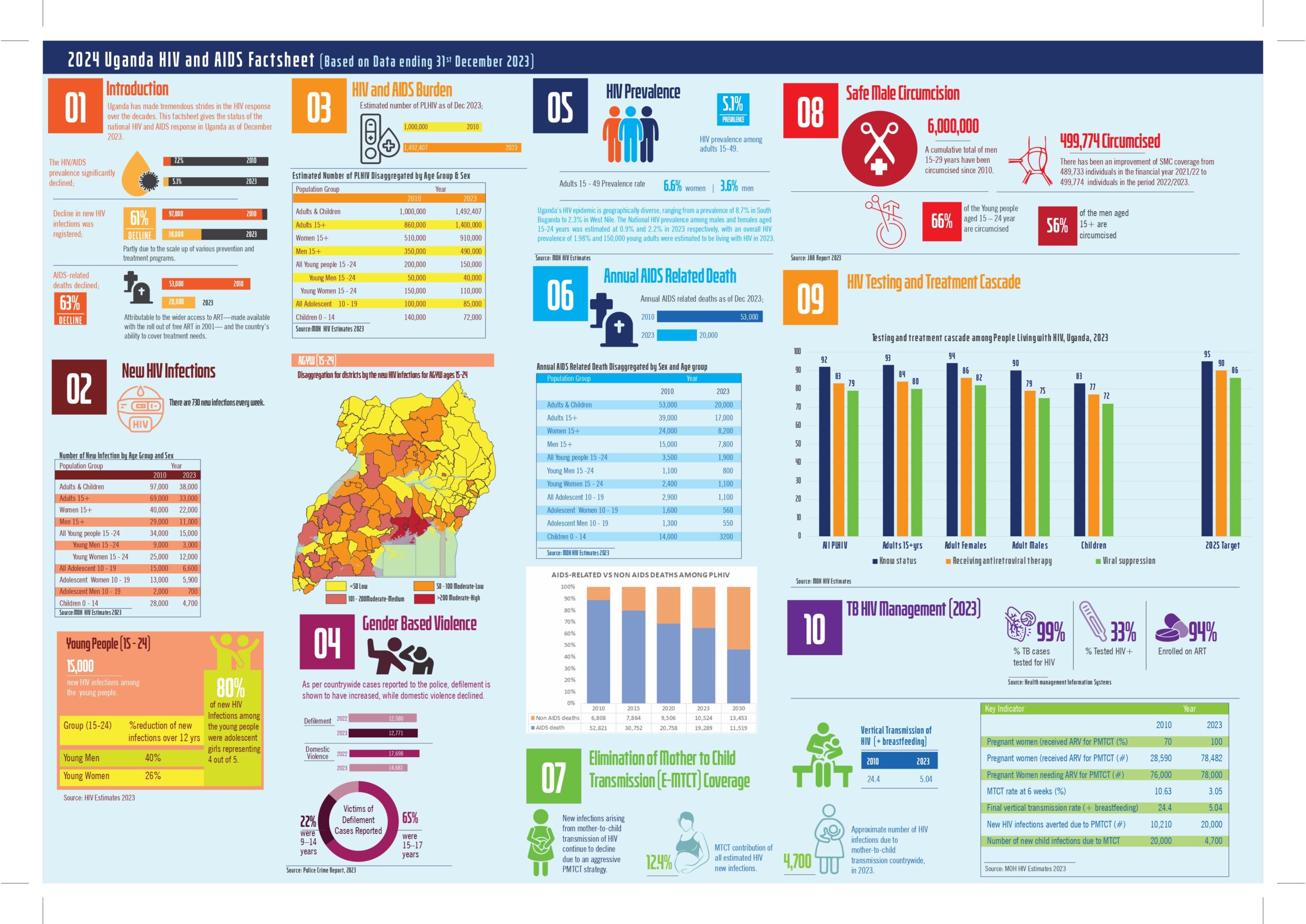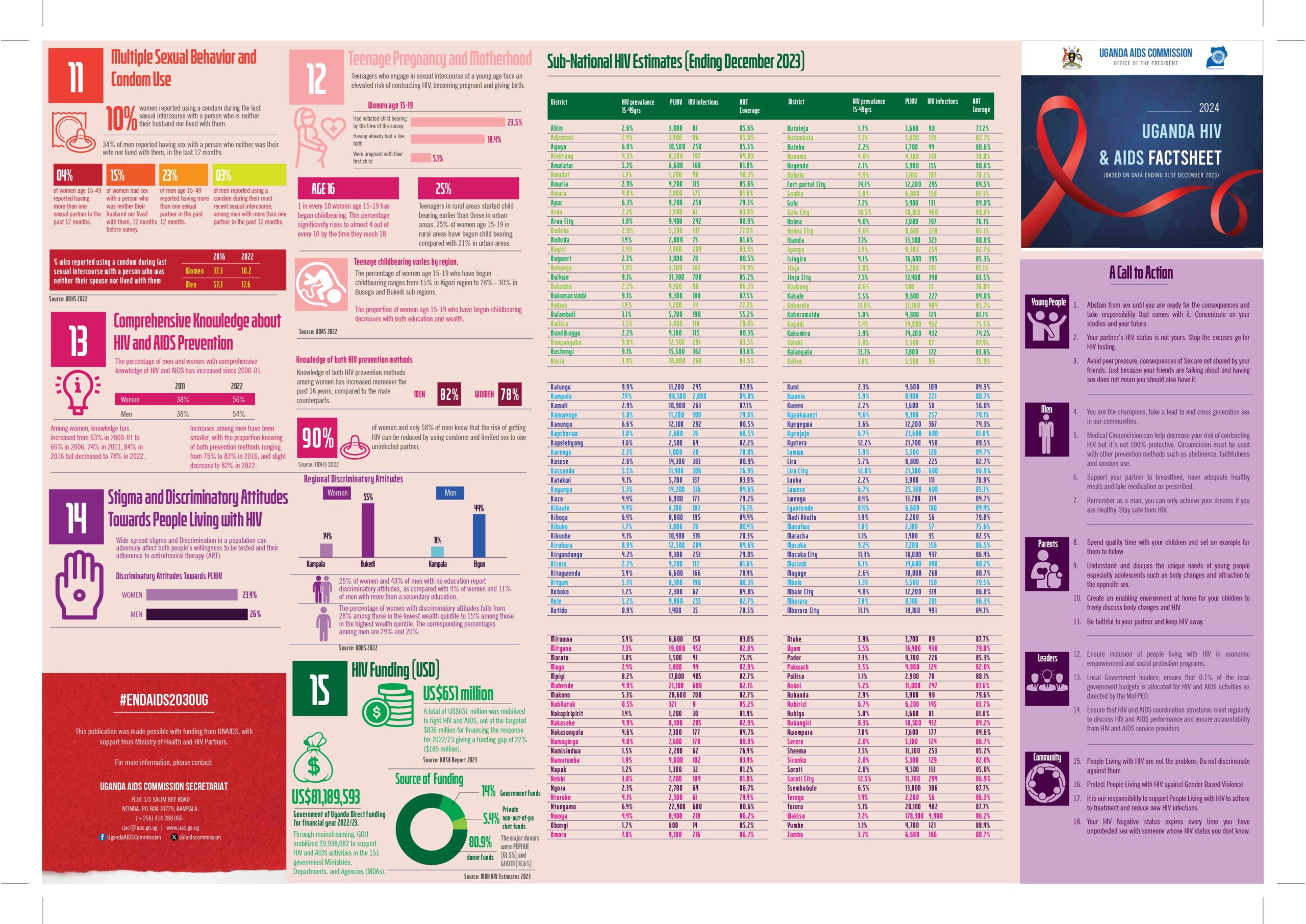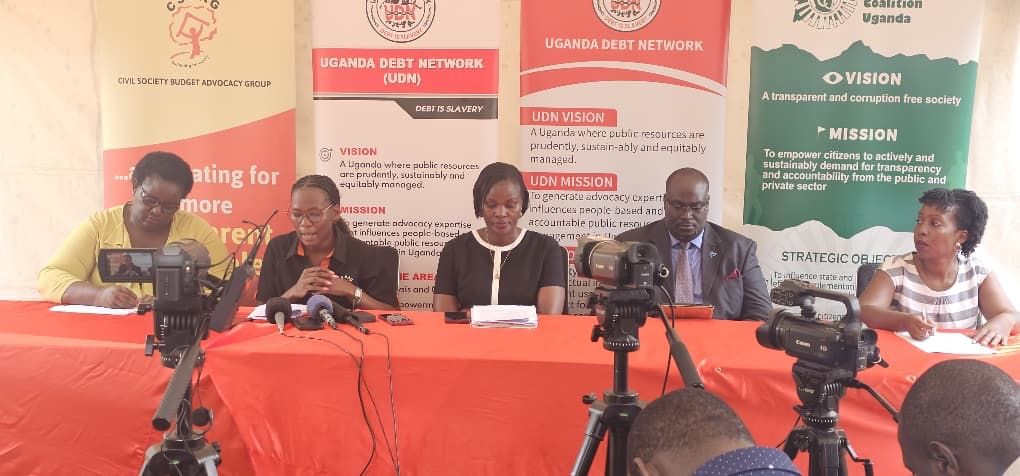Uganda’s HIV fight sees big gains, but young women still at risk

Kampala, Uganda — Uganda is making meaningful strides in its decades-long battle against HIV, with fewer new infections and far fewer AIDS-related deaths than a decade ago. But beneath the progress lies a growing concern: young women are still bearing the brunt of the epidemic.
The latest Uganda HIV & AIDS Factsheet (2024), released by the Uganda AIDS Commission, paints a mixed picture, one of both success and sobering reality.
Progress that saves lives
In 2010, Uganda saw around 97,000 new HIV infections. By the end of 2023, that number had dropped to 38,000. AIDS-related deaths also fell sharply—from 53,000 to 20,000—thanks in large part to better access to treatment and stronger prevention strategies.
At the heart of these gains is a growing number of Ugandans living longer, healthier lives with HIV. Treatment is more widely available, more people are getting tested, and vertical transmission—when mothers pass the virus to their babies—has been significantly reduced.
Once a quiet crisis, mother-to-child transmission now accounts for just 12.4% of new infections, down from nearly a quarter in 2010.
The girls left behind
But even as the country celebrates progress, there’s a clear warning: adolescent girls and young women are still at high risk.
Among young people aged 15 to 24, four out of every five new infections occur in young women. In 2023, over 12,000 girls and young women were newly infected with HIV, down from 25,000 in 2010, but still unacceptably high.
Why them?
It’s a question that stirs discomfort but demands attention. Many girls are exposed to cross-generational relationships, gender-based violence, and lack the power to negotiate safer sex. Poverty, low school retention, and limited access to youth-friendly health services deepen their vulnerability.
A health worker in central Uganda shared, “We see young girls coming in with advanced infections, many never got a chance to protect themselves or even understand the risks. The system is still failing them.”
What’s working and what’s not?
Uganda’s national response has been nothing short of aggressive. From widespread awareness campaigns to safe male circumcision, and from 100% ARV coverage for pregnant women to expanded ART programs, the infrastructure is stronger than ever.
But prevention among young people lags. Condom use is low. Conversations around sex, power, and consent remain hushed. And despite the presence of information, misinformation and stigma persist, especially in rural areas.
The 2022 Demographic and Health Survey showed that less than one in five young men used a condom during their last high-risk sexual encounter. Among women, the figure was even lower.
A question of money and mindset
There’s also the financial reality: Uganda needed $836 million to fully fund its HIV response in 2022/23. It raised just $651 million, leaving a $185 million gap. Most of the funding, over 80%, comes from donors like PEPFAR and the Global Fund.
The Uganda AIDS Commission warns that without increased domestic investment, these hard-won gains could stall or even reverse.
Yet funding alone isn’t enough. Stigma still lingers. Many people living with HIV report being shunned by family or discriminated against in schools and workplaces. And while more Ugandans understand how HIV spreads, outdated myths and silence continue to cost lives.
Protect the next generation
Experts agree: to end AIDS by 2030, Uganda must double down on protecting young women.
That means more open conversations about sex and relationships. It means making schools safe, equipping parents to talk to their children, and ensuring that health centers welcome, not shame adolescents seeking care.
And above all, it means recognizing that behind every number is a human story, one that deserves attention, protection, and hope.
“We’re on the right path,” said one official. “But if we can’t protect our daughters, our progress will never be complete.”





